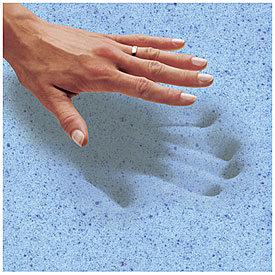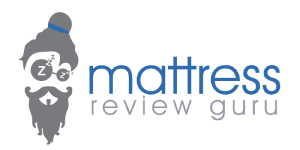Gel
Gel has been around for quite a long time. The original gels were offshoots of rubber materials. They were heavy and as they wore down they tended to become brittle and hard. During the space race, a new caliber of gel was developed. It was one of the co-polymer’s made to function much better than the original versions. This co-polymer gel was safe, durable, non-toxic and hypoallergenic. It was utilized in many applications including: foot in-soles, hospital beds, wheel chair cushions, car seats and home mattresses.
Gel is just beginning to become a factor in the manufacturer of mattresses and needs some explaining because there are many different kinds of gels suddenly appearing. Gel used for mattress purposes is most closely related to what is used in gel comfort insoles. Present day, gel most often appears as an additional layer of comforting material on a mattress. It is also sometimes infused with other types of foam to create a variety of pillows that naturally support the head and neck.

Types of Gel
- Intelli-gel® – This is the original co-polymer gel that is licensed exclusively to the company that builds intelliBED mattresses. It is a 100% co-polymer gel that in both hospital and industry testing has proven far superior to any foam or other gel for durability, pressure relief and safety. Because it is 100% non-toxic, hypoallergenic and anti-microbial it is used in serious wound care situations like the treatment of bedsores and to comfort burn patients.
- Foamed gels – Nexgel® and Orthogel® are two foamed gels that have been introduced to compete with the patent protected intelli-gel material. These gels by law have to contain at least 15-percent foam. Industry testing shows that in the same honeycomb configuration the foamed gels have less than 50-percent of the strength and durability of the 100-percent co-polymer intelli-gel(r).
- Memory Foam & Gel – Another use of gel in mattresses is to either spray a thin layer of gel over memory foam or incorporate some gel pieces with memory foam. This so called gel infused memory foam helps reduce the heat transfer that regular memory foam suffers from. Although this solves the heat build up problem, third party testing shows that the other issues with durability, body impressions and off-gassing still remain.
The Good
The number one benefit of gel mattresses and gel mattress toppers is in their contouring ability. Some would argue that this material does a better job of reacting to a body’s weight and shape better than memory foam.
The Bad
Once newly purchased gel comes in contact with a sleeper’s body and reacts to their body heat, the material can sometimes release gasses that have a distinct “chemical” smell, and can be disturbing while trying to rest.
About Us
Everything started for me when I started having back pain in the mornings when I woke up. I tried seeing a chiropractor and tried to exercise harder so I would stay asleep through the night. Nothing seemed to be working, I was just so stiff every morning that I didn’t know what could be causing it. Then I learned it was my mattress.
Recent News
How to Elevate Baby Mattress
Where to Buy Beautyrest Hospitality Mattress
© 2020 Mattress Review Guru. All Rights Reserved.


